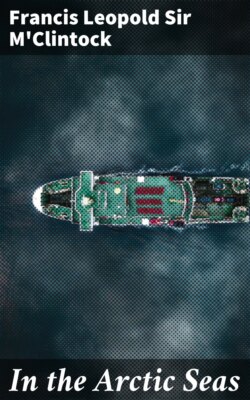Читать книгу In the Arctic Seas - Sir Francis Leopold M'Clintock - Страница 9
На сайте Литреса книга снята с продажи.
ОглавлениеGREATER GLACIER OF GREENLAND.
The far-off outline of glacier, seen against the eastern sky, has a faint tinge of yellow; it is almost horizontal, and of unknown distance and elevation.
There is an unusual dearth of birds and seals; everything around us is painfully still, excepting when an occasional iceberg splits off from the parent glacier; then we hear a rumbling crash like distant thunder, and the wave occasioned by the launch reaches us in six or seven minutes, and makes the ship roll lazily for a similar period. I cannot imagine that within the whole compass of nature's varied aspects, there is presented to the human eye a scene so well adapted for promoting deep and serious reflection, for lifting the thoughts from trivial things of every day life to others of the highest import.
The glacier serves to remind one at once of Time and of Eternity—of time, since we see portions of it break off to drift and melt away; and of eternity, since its downward march is so extremely slow, and its augmentations behind so regular, that no change in its appearance is perceptible from age to age. If even the untaught savages of luxuriant tropical regions regard the earth merely as a temporary abode, surely all who gaze upon this ice-overwhelmed region, this wide expanse of "terrestrial wreck," must be similarly assured that here "we have no abiding place."
GREAT GLACIER OF GREENLAND.
During daytime the strong glare is very distressing, hence the subdued light of midnight, when the sun just skims along the northern horizon, is much the most agreeable part of the twenty-four hours; the temperature varies between 30° and 40° of Fahrenheit.
The drift-ice of various descriptions about us is constantly in motion under the influence of mysterious surface and under currents (according to their relative depths of floatation), which whirl them about in every possible direction.
To the S.E. are two small islands, almost enveloped in the glacier, and far within it an occasional mountain-peak protrudes from beneath.
REINDEER CROSS THE GLACIER.
From observing closely the variations in the glacier surface, I think we may safely infer that where it lies unbroken and smooth, the supporting land is level; and where much crevassed, the land beneath is uneven. The crevassed parts are of course impassable, but, by following the windings of the smooth surface, I think the interior could be reached. Some attempts to cross the glacier in South Greenland have failed, yet, by studying its character and attending to this remark, I think places might be found where an attempt would succeed. Mr. Petersen tells me that the Esquimaux of Upernivik are unable to account for occasional disappearances and reappearances of immense herds of reindeer, except by assuming that they migrate at intervals to feeding-grounds beyond the glacier, the surface of which he also says is smooth enough in many places even for dog-sledges to travel upon. As there is much uninhabited land, both to the northward and southward of Upernivik, I do not see the necessity for this supposition. The habits of the Esquimaux confine them almost exclusively to the islands and sea-coasts.
